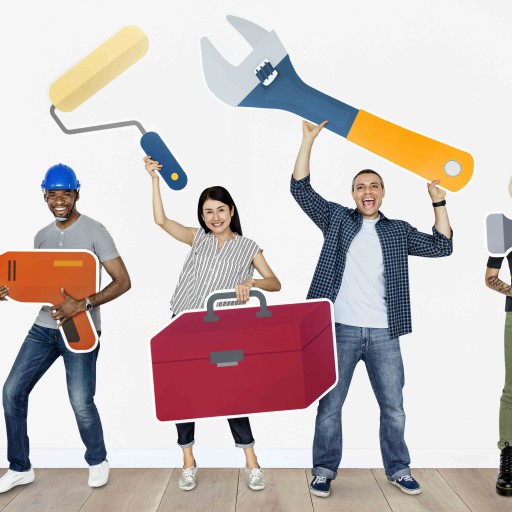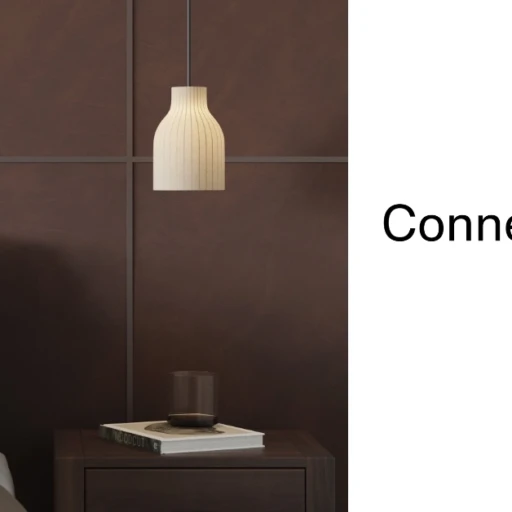The ability to move your home or office from one place to another is an attractive and tempting idea for many, even more so after spending so much time at home over the last few years. The pandemic made us reflect on our lifestyles and the types of homes that we want to live in. Having some outdoor space, contact with nature, and enjoying the fresh air are now almost as essential as breathing. For this and other reasons, mobile homes are trending, with this sector of the residential real estate market on the rise.
Ver esta publicación en Instagram
Living in a prefab house with smaller dimensions and only what you need, a house that allows you to use less energy, can be taken anywhere and is cheaper than any other type of property, with less to be paid in taxes and less bureaucracy, is now the reality for a growing number of people. Even in Spain, where the general belief continues to be that bigger the property you buy, the better, mobile homes are becoming more popular. Manufacturers are receiving more and more orders every day.
What is a mobile home?
Mobile homes are micro houses of up to 50 square metres that are not anchored to the ground, do not need foundations or to be hooked up to public utilities, and can be transported easily from place to place. In fact, most of these houses are on wheels, meaning they can be moved around by towing using a vehicle. Some tiny houses don’t have wheels, but it is possible to put them on a specially built truck and move them that way. All tiny houses can be moved in some way. As Galileo said, eppur si muove (‘and yet, it moves’).
Don’t let their size fool you. Even though they’re small, they have everything a modern home should have – a well-equipped kitchen, a full bathroom with shower, electrical appliances (some even have a washing machine and a dryer, an internet connection, and cable or satellite TV), as well as heating, climate control, and LED lighting. Their designs are defined by the necessary ingenuity required to ensure that their interiors make the very best of the available space.
Ver esta publicación en Instagram
Furnishing a mobile home: flexibility + functionality
Just because you’re ‘carrying’ your home around doesn’t mean it has to be heavy. Homes on wheels are often very light on contents. The key is not filling it with lots of objects, but rather just what you really need, which is what Alexis Stephens and Christian Parsons did. For the last six years, this couple has been living in a 12-square-metre house that they use to travel around the US.
They’ve dubbed their lifestyle Tiny House Expedition. Surprisingly, choosing a small and lightweight life has allowed them to experience something much bigger and deeper. They are convinced that simplifying your home expands and enriches your existence, as learning to better manage your space, avoid anything superfluous, and not accumulate unnecessary things encourages you to save. Essentially, it gives you independence and freedom. In their interview with AD, Stephens and Parsons explained that “what we have is essential for our daily life and for our enjoyment. We are more present and are more conscious of how we use resources and what’s truly important”.
Ver esta publicación en Instagram
Mobile homes use vertical design to get the most out of the space. The bedroom, for example, is often placed up high in the cabin, leaving more space free beneath it for daily activities. Furniture is usually made-to-measure, often collapsible, and fits two essential criteria: it must be versatile and flexible, and it must have several different functions. People living in tiny houses often reconfigure the interior depending on the time of day or what they plan to do, and one piece of furniture usually has more than one use. Perhaps the stairs leading to the bedroom are also drawers or where the water tank is stored. Maybe the dining area is also used as an office. Beds that fold up into the roof when not in use are also popular, as are hidden built-in pieces, such as sinks that can be covered easily and comfortably so that they can also be used as countertops.
Ver esta publicación en Instagram
Ver esta publicación en Instagram
From bungalows to modern homes
The interior and exterior aesthetics of mobile homes is anything but uniform. They have evolved over time and usually fit the preferences of their owners. This has resulted in many different mobile home models. Some are more colonial, similar to rural cabins or bungalows, while others are more avant-garde.
Ver esta publicación en Instagram
Ver esta publicación en Instagram
Ver esta publicación en Instagram
Shipping containers
As we previously mentioned, many of these homes are built on wheels and more and more are being made out of shipping containers, allowing these structures to be reused and to be given a new life in the most literal way possible. Shipping containers are modern and environmentally friendly, lighter than steel or reinforced concrete, yet also robust, designed to carry several tonnes and have the perfect structure because they can be stacked on top of each other and combined like a Meccano. And since they are already designed to withstand adverse weather conditions, they have a very long useful life.
Ver esta publicación en Instagram
The campervan option
Another type of mobile home is a camper, or a personalised van that serves as a tiny house or mini apartment on wheels. These vehicles have everything you might need: a bed, different types of storage, a fully equipped kitchen, and a bathroom. The number of ‘vanlife’ fans is growing and there are already businesses dedicated exclusively to ‘camperising’ vans, such as the Galician company Lamardevan, and the Asturian Rolling House North:
Ver esta publicación en Instagram
Ver esta publicación en Instagram
Nevertheless, one must be very careful about safety in a camper. According to a study carried out by the Swedish Transport Administration, the most important things to keep in mind are the quality and anchorage of the furniture (they showed that they can break and fragments can be projected at occupants, meaning they must be stronger than normal); the anchorage and protection of the seats, especially the ones at the back; and the driver assistance systems for preventing accidents that can alert the driver when, for example, they cross over into oncoming traffic. When it comes theft, there are systems and deterrents such as incorporating GPS that can be operated from a mobile phone and that tells you the exact location of your vehicle; special locks and alarms; steering-wheel locks and pedal blockers. Some other good ideas include installing a gas detector in case you get a leak, avoiding rest stops along highways, and spending the night in well-lit areas.
Advantages of living in a mobile home
Mobile homes have a lot of pros and we’ve listed a few of them below:
- Without a doubt, the main one is mobility: this type of house can be moved around and set up in different locations. Moving is a lot easier when you’re always taking your whole house with you.
- They are easy to set up: they leave the factory designed and equipped to be lived in immediately and are often come as independent modules that can then be joined directly on the land that they are going to be on.
- Very quick installation: the home is ready to be lived in in next to no time, often on the same day, because no construction is required.
- They adapt to different terrains because they’re versatile. Nevertheless, you should check the current legislation in the region you wish to settle in to see if there are any restrictions or requirements.
- Less paperwork: having to deal with less bureaucracy is definitely a big advantage of mobile homes. They are considered movable property and don’t usually require a municipal construction licence. However, it’s always best to double-check this before setting one up. In Spain, mobile homes are not required to be registered at the Property Register.
Ver esta publicación en Instagram
Living in nature with (hardly any) carbon footprint
One of the most attractive things about the mobile home life is having a lifestyle that brings you into contact with nature, leaving the stress and fast pace of cities behind. Tiny, transportable houses are all about being respectful of the environment by reducing CO2 emissions and resource use as much as possible. These houses are usually made using environmentally friendly materials, with timber being one of the most frequently used, and they take up very little space. Many tiny house models include solar panels, systems that collect and reuse rainwater, and composting systems, meaning not only are these homes mobile, but they are also self-sufficient.
Ver esta publicación en Instagram
Supply, design, and financing: the three main disadvantages of mobile homes
Living in a mobile home also means having to deal with certain disadvantages compared to bigger, more conventional builds. Let’s take a look at a few of them:
- Limited design and size: mobile homes must not exceed certain dimensions, nor can they have more than two storeys, because this would complicate the process of moving them. Remember, their mobility is the main reason that they even exist. Therefore, they are usually small, single-module structures (although sometimes another module can be added if you want more space).
- You can’t finance them with a mortgage because they are considered a movable property. You can, however, get a personal loan from the bank, but the loan conditions aren’t usually that great.
- They should be self-sufficient when it comes to energy supply and sanitation. They aren’t connected to public water and electricity supply networks like fixed prefab houses are.
- They require specialised transport: most of these homes must be moved by professionals and using a truck.
- They also need authorisation just like on-site construction offices, which require documentation about their location. These homes are perfectly identifiable by their number plate.
- In the The New York Times article ‘What no one ever tells you about tiny homes’, they mention a few other cons, including how objects end up having a shorter useful life (using fewer things means what you do have gets used more and needs to be replaced more frequently) and the way that some odours stick around despite adequate ventilation.
Ver esta publicación en Instagram
So, does that mean I can take my mobile home anywhere I want?
Not exactly. In Spain there are no specific regulations for this type of structure because permissions and licences depend on whether it is a fixed or mobile prefab house. The former is an unmovable property (“land, buildings, roads, and structures of any type that attached to the ground”), while the latter is considered a movable property because they don’t have a foundation and “can be transported from one place to another without damaging the unmovable property to which they were joined”. This means that, yes, they are houses, but they can be towed easily from one place to another without compromising their physical integrity.
While fixed properties must be connected to public water and electricity supply systems, movable structures are capable of being self-sufficient by using their own supplies. Nevertheless, even though a construction licence is not required, you should always check with the council in which you wish to set one up because they might have some specific regulations about these structures and, if you don’t comply with them, there might be an administrative enquiry about its legality, resulting in you no longer being able to use your home or being fined for not having planning permission.
How did all this come about?
Towards the end of the nineties, a social movement called Tiny House emerged in the United States following the publication of a book titled The Not So Big House by the architect Sarah Susanka. She advocated, and continues to advocate, for simplicity and reducing the size of the spaces we live in without giving up the quality and comforts of modern life. Her philosophy, which has evolved since it went global, is that less is more, meaning it’s not necessary to have a mansion with a pool or a 200-square-metre home whose mortgage costs more than a third of your salary. Small mobile homes offer a different way of living that’s perfect for the new nomad.
This brings us to the Oscar-winning film Nomadland which was directed by Chloé Zhao and starred Frances McDormand. The movie, inspired by the book Nomadland: Surviving America in the Twenty-First Century, features ‘workampers’, or modern workers that travel the United States in their caravans and campers, looking for work and living in their vehicles.
Ver esta publicación en Instagram
The plot of Nomadland isn’t a true story, but it is based on the lives of real people. It also features many real people, including Linda May and her old 1974 trailer that she refers to, with both affection and irony, as The Squeeze Inn.
Ver esta publicación en Instagram
What about you? Do you think you could live the nomad life in a mobile home? Let us know what you think on social media using the #ConnectionsByFinsa.




